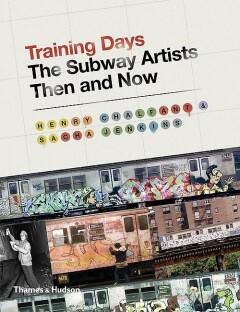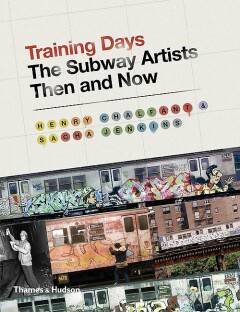
Door een staking bij bpost kan je online bestelling op dit moment iets langer onderweg zijn dan voorzien. Dringend iets nodig? Onze winkels ontvangen jou met open armen!
- Afhalen na 1 uur in een winkel met voorraad
- Gratis thuislevering in België vanaf € 30
- Ruim aanbod met 7 miljoen producten
Door een staking bij bpost kan je online bestelling op dit moment iets langer onderweg zijn dan voorzien. Dringend iets nodig? Onze winkels ontvangen jou met open armen!
- Afhalen na 1 uur in een winkel met voorraad
- Gratis thuislevering in België vanaf € 30
- Ruim aanbod met 7 miljoen producten
Zoeken
€ 20,95
+ 41 punten
Omschrijving
Late 1970s New York City was bankrupt and its streets dirty and dangerous. But thecity had a wild, raw energy that made it the crucible for the birth of rap culture and graffiti. Graffiti writers worked in extremely tough conditions: uncollected garbage, darkness, cramped spaces, and the constant threat of police raids, assault by security staff and attacks by rival crews. It was not unlike practicing performance art in a war zone. Yet during the fertile years of the late 1970s and 1980s they evolved their art from stylized signatures to full-blown Technicolor dreamscapes. Henry Chalfant created panoramic images of painted trains by photographing overlapping shots along the train's length. It took time to earn the writers' trust andrespect, but Chalfant became their revered confidant and with Tony Silver went on to produce the classic documentary film Style Wars (1983). Through a series of interviews conducted by Sacha Jenkins, we hear the voices of these characters of old New York. Quite a few of the original writers are no longer with us, but those who have survived have continued to push the envelope as artists and individuals in a new millennium.The stories they tell, included here alongside iconic, raw photographs of their work, will enthrall graffiti fans everywhere.
Specificaties
Betrokkenen
- Auteur(s):
- Uitgeverij:
Inhoud
- Aantal bladzijden:
- 176
- Taal:
- Engels
Eigenschappen
- Productcode (EAN):
- 9780500239216
- Verschijningsdatum:
- 1/10/2014
- Uitvoering:
- Hardcover
- Formaat:
- Genaaid
- Afmetingen:
- 169 mm x 222 mm
- Gewicht:
- 517 g

Alleen bij Standaard Boekhandel
+ 41 punten op je klantenkaart van Standaard Boekhandel
Beoordelingen
We publiceren alleen reviews die voldoen aan de voorwaarden voor reviews. Bekijk onze voorwaarden voor reviews.











